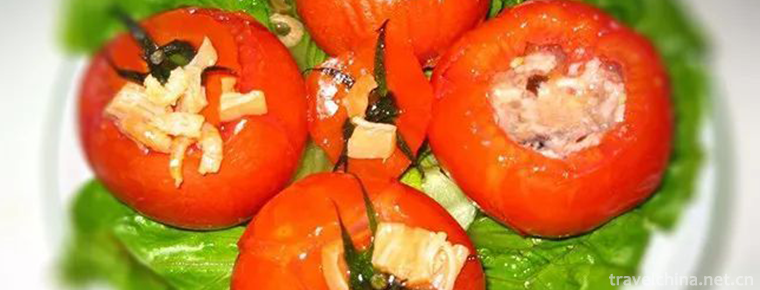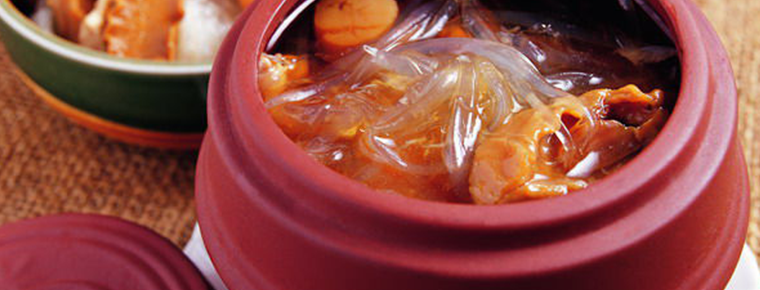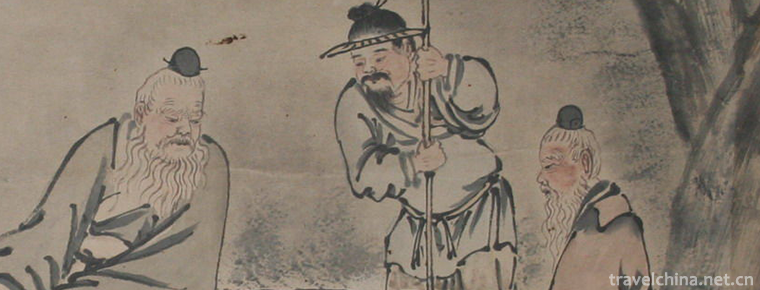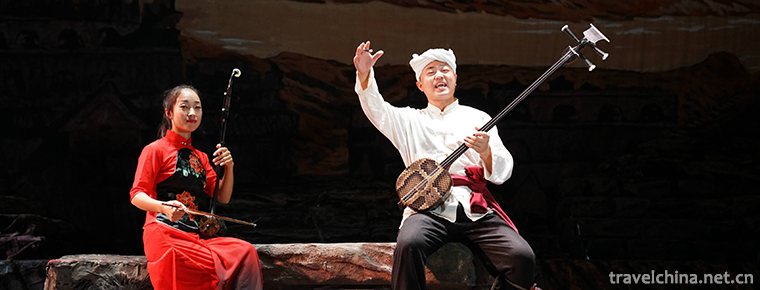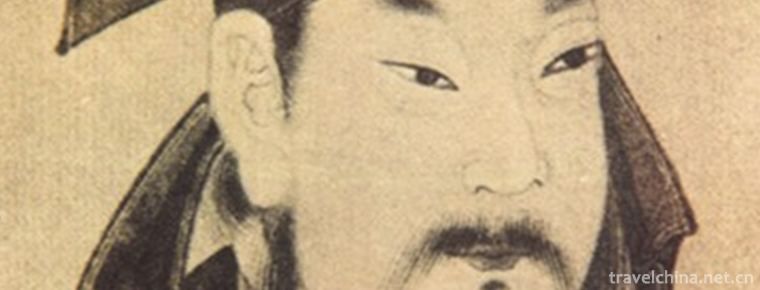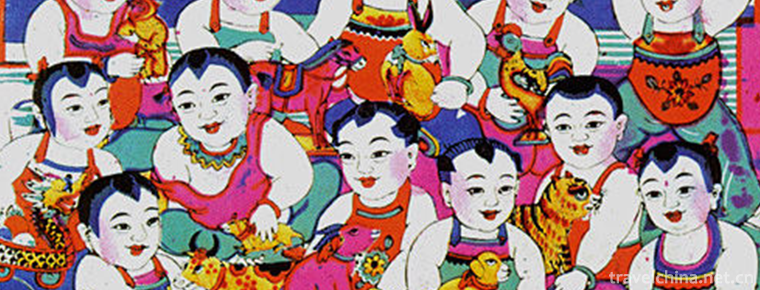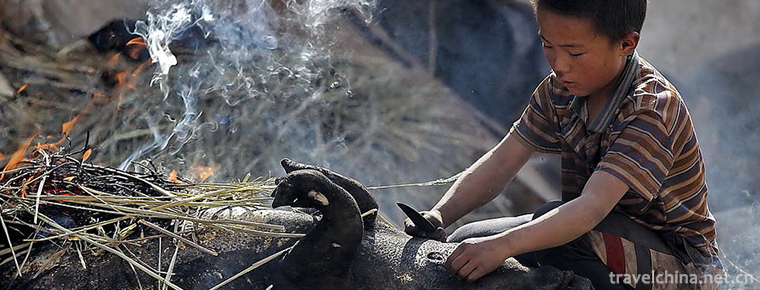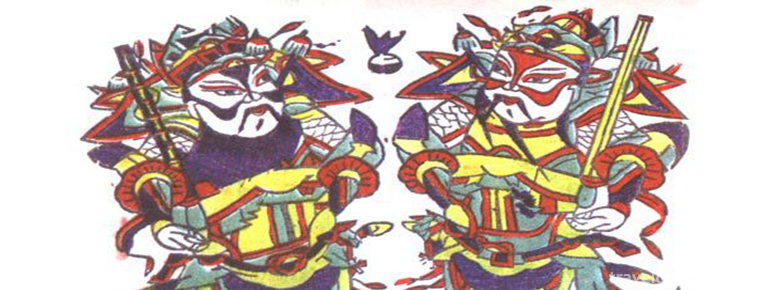Dragon Dance
Dragon Dance
Dragon dance, also known as "Dragon Dance", is also called "Dragon Dance", "Dragon Lantern Dance" or "Dragon Dance Lantern Dance", one of the traditional Chinese folk dances, is widely distributed throughout the country, and its various forms and varieties are incomparable with any other folk dance. As early as the Shang Dynasty oracle bone inscriptions, there have been several people collectively offering sacrifices to dragons for rain; Dong Zhongshu in the Han Dynasty "Spring and Autumn Fenlu" records have been clear records of various dragon dancing for rain; since then, the records of court or folk dragon dancing in poetry and prose of successive dynasties are common. Up to now, dragon dance is still one of the popular dance forms in folk festival occasions. The most basic means of expression of dragon dance are prop shape, composition change and action routine. Dragon is the totem and ancestor of the Chinese nation; dragon dance is the symbol of the spirit of the Chinese nation. It embodies the spirit of the Chinese nation's unity, solidarity and pioneering efforts. It contains the cultural connotation of harmony between heaven and man and the benefit of mankind. It is the most common entertainment way for Chinese people in the auspicious and blessed seasons. The atmosphere is warm and exciting, and it is the most precious cultural heritage of the Chinese nation.
In 2006, it was listed as the national intangible cultural heritage list.
historical origin
According to Dong Zhongshu's "Fanlu in Spring and Autumn" records, the Han Dynasty has a relatively complete form of dragon dance: in the ritual activities of praying for rain and snow, the spring dance of Qinglong, the summer dance of Chilong or Huanglong, the autumn dance of Bailong, the winter dance of ink dragon; each dance of 5 to 9 dragons, dragon can be counted Zhang. After more than 2000 years of creation and development, Chinese folk dragon dance has quite high skills (including tie-up art), and its performance forms are also rich and colorful.
Style and characteristics
major schools
Chinese traditional folk dance. It was named after the dancer who held the Dragon props in the legend. The image of dragon originated from the totem of ancient China and was regarded as the symbol of the nation. Legend has it that dragons can spread clouds and rain, eliminate disasters and bring good fortune. In 2006, it was listed in the first national intangible cultural heritage list, No. III-4. More widely circulated are:
1. dragon lantern
Also known as Fire Dragon, Jinlong. Dragon heads, dragon bodies (3-10 knots) and dragon tails are tied with bamboo strips and silk cloth. Dragon scales are painted and candlelight is installed in each dragon body. When dancing, one person holds a lantern (symbolic jewelry) in front of the lead dance, while many others dance with the tap, dragon body and wooden handle under the Dragon tail, performing "Erlong Drama Pearl" and "Jinlong Panyuzhu" and so on. Dragon lanterns are mostly dancing on festival nights, accompanied by gongs and drums, suona, and fireworks, which make them spectacular and lively.
2. grass dragon
In May and June of the summer calendar, farmers in the South formed dragons with wickers, ivy vines and straw. The dragon was covered with incense and danced in the field yard after evening. It looked sparkling and cigarette smoking. In the past, mostly danced in the sacrificial activities during the drought or insect disaster, with the intention of repelling insects and praying for rain. In addition, there are some non-connected dragon dances, such as the louver, which is popular in Zhejiang. They are made up of dozens or even hundreds of lotus lanterns, lotus lanterns and butterfly lanterns, which are connected in series. The big lotus lantern is the leader and the butterfly lantern is the tail of the dragon and shuttles back and forth. In Jiangsu, a kind of Duanlong is popular. Its head, body and tail are all made of red silk. It is light and graceful. Most of them are danced by women. The fish run through many formations, like a rainbow winding in the air. Dragon dance is the most popular folk dance in Chinese traditional festivals. Dragon dance is also used to express traditional community culture in Chinese-populated areas in the world.
Props classification
According to the different binding materials of dragon-shaped props, it can be divided into cloth dragon, yarn dragon, paper dragon, grass dragon, Qianlong, bamboo dragon, brown dragon, bench dragon, louver dragon, lotus dragon, Turkey dragon, chicken feather dragon, meat dragon and so on; the northern dragon dance is generally tall and heavy, the style is simple and vigorous; the southern dragon dance is exquisite and meticulous, lively and agile. Dragon dance can be divided into yellow, white, green, red, black and so on in terms of color, with Huanglong as the most noble. The composition and movements of dragon dance generally have the characteristics of "roundness", "rolling", "twisting", "interpolation" and "leaping". The traditional performing procedures of dragon dance are as follows: "invite dragon", "get out of dragon", "dance dragon" and "send dragon". Folk people have the saying "seven or eight years old play grass dragon, fifteen or sixteen play small dragon, young and middle-aged dance dragon". When the number of dragon dancers is small, one person dances Double Dragons and more than one hundred people dances a big dragon.
Basic motion
The dragon in dragon dance is composed of a dragon head, a dragon body and a dragon tail. The dragon body is longer and is the main body of the dragon. When making dragons for such performances, bamboo strips or wire are used as shelves, paper or cloth is applied on the outside, and the joints of the dragon's body are sewn into tubular joints with cloth, and then their shapes are painted. After the Dragon body, the tap and the tail are made, wax stalks are inserted in the middle of each section of the Dragon body, and wooden handles are placed at the bottom for the performers to grasp by hand.
At the beginning of the dragon dance performance, many people each hold a wooden handle, waving left and right, making the dragon body wriggle in the air. At night, when dancing dragon, we should light candles inside the dragon, supplemented by colorful lanterns, lotus lanterns and other lanterns. At the same time, fireworks and firecrackers are used to create a certain momentum, attract the audience, and make the Dragon Dance present an extraordinary splendor.
Inheritance status
Tongliang dragon dance
Declaration area or unit: Chongqing
Tongliang Dragon Dance is a dance art form with dragon as its main prop, which is spread in Tongliang County of Chongqing City. It rose in the Ming Dynasty and flourished in the Qing Dynasty, replaying its splendor in the contemporary era and enjoying a worldwide reputation.
Tongliang Dragon Dance includes two series: Dragon Dance and Colored Dance. Dragon Lantern Dance mainly includes 10 varieties, including Big Vermicular Dragon, Fire Dragon, Straw Dragon, Bamboo Shoot Shell Dragon, Huangjinglong, Bench Dragon, Zhenglong, Xiaocailong, Bamboo Banglong and Lotus Dragon, among which Big Vermicular Dragon is the most characteristic. The lantern dance mainly includes Fish Diving dragon gate, loach eating Tangyuan, three, eighteen bachelor, bright lion, mountain tiger, clam shell essence, rhinoceros moon, pig chew pumpkin, high stage dragon lion dance, wild goose pagoda title, pumpkin shed twelve varieties.
Zhanjiang Dragon Dance
Declaration area or unit: Zhanjiang City, Guangdong Province
The Dragon Dance in Dongshan Village, Dongshan Town, Donghai Island, Guangdong Province, is known as "Oriental One Wonderful". During the performance, dozens to hundreds of young adults and teenagers wore shorts, joined by human bodies, forming a "long dragon". In the sounding of gongs, drums and horns, the "Long Dragon" has a high head, a rolling dragon body and a vigorous dragon tail. It is like a dragon going to sea, overwhelming mountains and overwhelming seas. It shows unique island color and strong local flavor. It is an important part of the enduring folk customs and large-scale Plaza entertainment activities in the East China Sea Island and Leizhou Peninsula. Every Spring Festival, Lantern Festival, Mid-Autumn Festival and some major festivals, Dongshanwei Village will dance for several nights "Dragon", East and West Street households are decorated with lanterns, households pour out, crowds of people, extraordinary liveliness.
According to the artist's legend, Renlong Dance started around the end of Ming Dynasty. The defeated Ming Army retreated to Leizhou Peninsula and Donghai Island. In the Mid-Autumn Festival, local people arranged this dance to inspire the morale of the Ming Army. From then on, the human dragon dance spread here and reached its peak in the Qing, Qianlong and Jiaqing dynasties. Dragon Dance is the product of special social and historical factors and regional natural conditions in the East China Sea. It integrates the customs of entertaining dragons, respecting dragons, offering sacrifices to the sea, respecting ancestors and worshipping gods into the "Dragon Dance" and forms a unique form of dragon dance performance and the spirit of "Dragon Dance". Zhanjiang Dragon Dance has unique performances, such as starting dragon, nodding dragon, dragon piercing clouds, tornado waves, etc. The performers have practiced fast shoulder-holding and steady movements and footwork. The formation is fluent and changeable, the movements are complete at one go, the long-term sense of movement is full, and the near-term magnificence has become an important part of the extension and development of Chinese dragon culture.
Luzhou Rain Tan Cailong
Declaration area or unit: Luxian County, Sichuan Province
Luzhou Rain Tan Cailong in Sichuan is known as "Eastern Living Dragon" for its long history and romantic dragon dance performance art. In the eighteenth year of Guangxu in Qing Dynasty, local artists changed the original "grass dragon" into a color dragon. By 1919, the first rain altar color dragon appeared. Since then, the local people have to dance dragons every New Year's Day or wedding or funeral.
The performance of Rain Tank Cailong focuses on the word "live" and "man and dragon are one". During the performance, dancers "move from the middle to the outside", "have temperament, hand expression", "hand follow eye movement, eye follow heart". With the accompaniment of percussion music in Sichuan Opera, dragon and treasure are intertwined and closely echoed. Dragon dance vividly depicts the individual characteristics and life style of dragon. Rain Tan Cailong is performing according to the continuous Taiji pattern. The routine is unpredictable. The performance is lively and flexible. It can change many ends, or strip, or roll over, or sigh, or scratch. It shows the dragon's temperament. In this process, the dancer and the dragon's emotions merge into one.
In the long practice of performance, the descendants of Rain Tan Cailong constantly updated and enriched the content of the performance, forming a complete performance routine and classical action models, such as dragon hole, dragon robbing treasure, dragon stripping, dragon back sword, dragon sigh, dragon pagoda, dragon holding pillar, Huang Long Rong, inverted golden hook, Prince riding dragon, etc., to maximize the people's imagination of the dragon.
River Banlong Dance
The dragon dance on the river is a form of folk dance. It is a dragon dance. The dance image is the totem of the Chinese nation - dragon, which shows the essence of Xiaoshan folk arts, and is an outstanding representative of Xiaoshan folk culture. It has a history of more than 850 years since Shaoxing in Southern Song Dynasty (1159).
Inheritance significance
Tongliang Dragon Dance has the characteristics of close connection with folk activities, rich routines and interesting rhythm. It has unique accompaniment music, ingenious prop design, exaggerated shape, simple and generous dress, free dancers, convenient withdrawal, and strong participation of the masses.
Tongliang Dragon Dance embodies the spirit of unity and unity, benefit mankind, strive for progress and harmony with heaven. It also has the social functions of entertaining gods, entertaining people and demonstrating power. Tongliang Dragon Dance is famous for only a few species such as Big Vermicular Dragon and Fire Dragon. Most of the Dragon Dance varieties are in danger and need to be protected and rescued urgently.
Zhanjiang Dragon Dance has gradually lost its attraction and is in a declining state. In order to protect the folk cultural heritage, it is necessary to rescue and organize it as soon as possible.
Pujiang Bench Dragon retains the folk cultural tradition of "Dragon Belief" in China, especially in the coastal areas of central Zhejiang and southern Jiangsu, integrates the folk forms of calligraphy, painting and paper-cut, inherits the art forms of mass sports and square dance, has the value of folklore, historical research and folk craft inheritance function, and has produced far-reaching and extensive shadow in Pujiang, central Zhejiang and southern Jiangsu coastal areas. Ring. However, the impact caused by the changes of the times inevitably falls on the bench dragon of Pujiang River, which makes its inheritance in a dilemma and urgently needs rescue and protection.
As a unique folk dance of the Chinese nation, Changxing Baiyelong has high artistic value. The change of the times has influenced the orderly inheritance of the Changxing Baiyelong, which makes this valuable folk art form face the survival crisis. In order to protect and inherit the Louvre art, Changxing local government has taken a series of effective measures to protect local cultural resources and create a good atmosphere of cultural brand with characteristics.
The cultural value of Bulong in Fenghua is prominent, and the ecological environment of folk distribution is facing potential crisis. Therefore, local governments have taken the lead in putting it into the protection category. In 1990, Fenghua Bulong was selected as "Integration of Chinese Ethnic and Folk Dances (Zhejiang Volume)"; in 1996, Fenghua City was named "Town of Chinese Folk Art" by the Ministry of Culture; in 2005, Fenghua Bulong was listed as the first group of representatives of intangible cultural heritage by the Zhejiang Provincial Government.
Luzhou Rain Tank Cailong's bibcock is unique in shape. It is mainly based on the bibcock design of Longnaoqiao, a national key cultural relic protection unit in Luzhou County. Its forehead is high, mouth is short, eyes are prominent and movable, and its jaw opens and closes freely. Its image is both powerful and divine, but also simple and amiable. The dragon body is made of bamboo strips, which can be divided into groups and sections, and can be long or short. The whole dragon body is tied in a circle with bamboo strips, connected in series with each other, and flexible after putting on Dragon clothes. Dragon tail is also different from the common torch tail and snake tail. It is silver carp-like and very interesting.
Represented by artist Luo Yinkun and other Roche brothers, it constitutes the inheritor system of Rain Tan Cailong. In the contemporary era, this system of transmission has been greatly expanded, not only a group of young people joined, but also Chongqing, Tongliang, Chengdu and other places sent people to learn art, thus expanding the distribution area of Rain Tan Cailong. Nowadays, Rain Tan Cailong is also facing the challenge of the new era. It is urgent to establish a protection and inheritance mechanism.

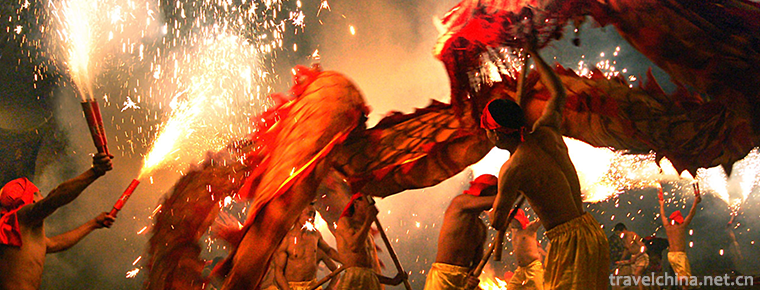
-
Five city tea driedWucheng Dried Tea
Wucheng Dried Tea, a specialty of Xiuning County, Anhui Province, is a national geographical indication product..
Views: 127 Time 2018-11-27 -
Eight treasures tomato
Blanch the tomatoes with boiling water, peel them off, dig a round piece along the pedicle one week, remove the seeds and wash them. Cut all the accessories into small dices, mix shrimps and meat with.
Views: 266 Time 2019-03-25 -
The Craft of Juchunyuan Buddha Jumping Wall
"Buddha Jumping Wall" is the first famous dish in Fujian cuisine. It is well-known at home and abroad for its exquisite materials, unique preparation method and strong flavor.
Views: 117 Time 2019-05-08 -
Legend of Ronke Mountain
The legend of Mount Ronke is a local folklore spread in Quzhou, Zhejiang Province. Weiqi originated in China, and it is said that the root of Weiqi is Mount Ronke..
Views: 148 Time 2019-05-11 -
Talking in North Shaanxi
North Shaanxi storytelling is mainly popular in Yan'an and Yulin in the north of Shaanxi Province. At first, poor and blind people sing some legendary stories in the folk song minor of northern Shaanx.
Views: 206 Time 2019-06-13 -
Legend of Wang Xizhi
Wang Xizhi's legend is a local folklore in Shaoxing City, Zhejiang Province. Wang Xizhi has few words. Jin Dynasty, one of the most famous calligraphers in China, once served as a general of the Right.
Views: 204 Time 2019-06-26 -
Yangjiabu woodcut New Year paintings
Yangjiabu wood engraving New Year's picture is a traditional folk engraving which is spread in Weifang City, Shandong Province. Its production method is simple, exquisite craft, bright color, rich con.
Views: 115 Time 2019-07-11 -
Year of the Yi Nationality
In the year of the Yi people, the Yi language is called "Kusi", "Ku" is the year of the Yi people and "Si" is the new year. It means "New Year". It is a traditi.
Views: 211 Time 2019-07-12 -
Zhuxian Town Wood Print New Year Picture
Zhuxianzhen Wood Engraving New Year Picture is one of the ancient Chinese traditional crafts. As the originator of Chinese woodcut New Year pictures, is mainly distributed in Kaifeng, Zhuxian Town and.
Views: 134 Time 2019-08-10 -
Yibin university
Yibin College is located in Yibin City, Sichuan Province, which is a famous national historical and cultural city. It is a full-time comprehensive undergraduate college with beautiful environment and .
Views: 160 Time 2019-08-31 -
Deyang medical and health
By the end of 2018, Deyang City had 2819 health institutions (including village clinics), including 7 centers for Disease Control and prevention, 7 health supervision institutions, 1 Emergency Center (station), 6 maternal and child health centers, .
Views: 319 Time 2020-12-14 -
Yibins first industry
In 2019, the total output value of agriculture, forestry, animal husbandry and fishery in Yibin is 45.084 billion yuan, up 2.8% over the previous year; the added value of agriculture, forestry, animal husbandry and fishery is 28.346 billion yuan, an increase of 3.0%..
Views: 123 Time 2020-12-18

